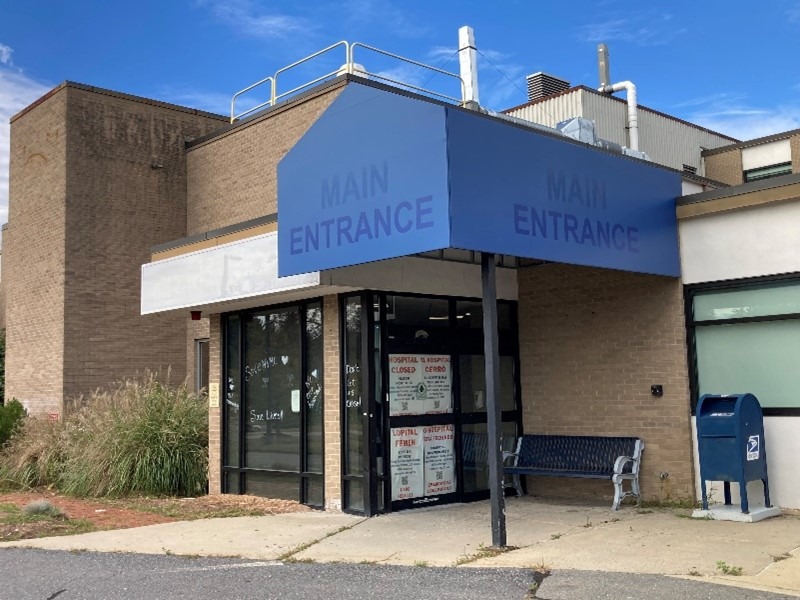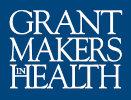Amie Shei, President and CEO, The Health Foundation of Central Massachusetts
It has been over a year since the August 31, 2024, closure of a beloved community hospital in Ayer, Massachusetts following the bankruptcy of the private equity-backed Steward Health Care system. The impacts of the Nashoba Valley Medical Center closure continue to reverberate across this rural working-class region, adding to a growing sense of abandonment and frustration that has accumulated over waves of health care service cuts.

As is true in many other states, the communities farthest from the capitals often receive far less attention and fewer resources. For decades, the Nashoba Valley community has experienced chronic underinvestment from the government. Even as the state mobilized to respond to the Steward crisis, support felt inconsistent across the region. The state provided funding to facilitate the transfer of many of the other Steward hospitals to new operators and in one instance even exercised eminent domain to seize hospital buildings and land.
Following a community’s loss of health care services, a rational response from a funder would be to jump in and try to fix the problem and ease the pain. I certainly felt that pull. Yet I also recognized that as the primary health-focused funder in this region, my organization, The Health Foundation of Central Massachusetts (The Health Foundation), had to be strategic and disciplined as our resources are limited and our service area is broad.
Over the past year, we have embarked on a phased, multi-pronged approach to supporting the Nashoba Valley region. The exact strategies and our investments of time and funding were not clear at the outset, but they fell in place piece by piece as we listened to the community, and they will continue to evolve over time as we accompany the community in reimagining health in the region. I am sharing our experience in the hopes that it can help other funders considering support in the wake of a hospital closure in their own communities.
Advocacy Pre-Closure
In the months leading up to the closure, we focused on raising awareness of the devastating impact of losing a community hospital and pressing state leaders to step in with greater investment in the region. As a 501(c)(4), The Health Foundation is not shy about advocating and lobbying for policies and investments important to our region. Even foundations that are 501(c)(3) organizations can play a meaningful role by supporting advocacy and education that is distinct from lobbying.
At the Massachusetts Department of Public Heath’s mandatory public hearing, I joined hundreds of concerned residents and advocates—and waited several hours—to testify on behalf of The Health Foundation about the negative impacts of the impending closure. I foreshadowed the unfortunate hollowing out of health care services that would likely happen post-closure without coordinated response and action, a scenario we saw play out after a hospital closure in another rural community in our service area and far too often across the country. My testimony called for greater state investments in the Nashoba Valley region, upstream investments, and regional equity.
In this case, the fate of the hospital had already been sealed, unfortunately, and the Commonwealth of Massachusetts did not have the authority to prevent its closure even if it tried. Therefore, our attention was focused on showing solidarity with a community in pain, listening to the concerns of those who would be most impacted, and building the case for the investments that would need to be made to support the community in the aftermath. The experience of providing testimony and listening to hours of other testimony illuminated the long road of planning and rebuilding trust that would be needed.
On-the-Ground Support Immediately Post-Closure
Following the closure, it was a priority to focus on the immediate needs of our residents, as some patients initially tried to return to the shuttered hospital for care while others, not knowing what to do, opted to delay seeking treatment altogether. In response, The Health Foundation provided a $25,000 grant to Health Care For All, a statewide health care advocacy organization, to conduct on-the-ground canvassing and a brief companion survey in the region. These efforts helped residents understand where to get care, ensure their health insurance coverage still met their needs, obtain medical records, and stay current on other important information during the critical transition period. The Health Foundation also recruited several other local funders to support this effort, which provided Health Care For All the backing it needed to raise additional funding, including from the state.
Though many initially wondered about the effectiveness of door-to-door canvassing in a rural region, it proved to be very successful. Nearly 20,000 doors were knocked, with a contact rate of almost 25 percent. This is significant in a rural region, and it meant that important resources and information were exchanged through almost 5,000 conversations. The canvassers, who were recruited from the region, asked residents about their top concerns. Two issues dominated: the loss of an emergency room nearby (54.3 percent); and loss of access to medical specialties (20.3 percent). Other concerns included loss of access to a primary care provider, the economic impact to the region, and the lack of transportation to other medical facilities. When asked where they would seek care in the future, nearly 60 percent said an urgent care center and almost 20 percent said an emergency room at a hospital even further away. These data informed other efforts that followed, which are described below.
Feedback from Local Stakeholders
Following a crisis like the closure of a hospital, there is often a push to respond immediately and deploy funds rapidly. The Health Foundation recognized that its resources were limited and could not save a hospital from closing or launch new health care facilities that would need to be sustained over time. We wanted our investments to be impactful and to be driven by community-identified needs. Fortunately, stakeholder engagement was already underway, so we did not see a need to duplicate efforts. In light of the hospital closure, the governor convened the Nashoba Valley Health Planning Working Group comprised of local stakeholders to review the region’s health care needs. Health Care For All presented its canvassing and survey data to the working group, along with additional information gathered through community visioning sessions and individual interviews. The Health Foundation followed this group’s work and eagerly awaited its final report to help guide our decisions on how to support the region.
After several months of convening and community engagement, the working group issued its final report outlining key priorities: re-establishing essential services in the region in a tiered approach; addressing EMS workforce and infrastructure challenges; and expanding access to care (to include home-based options, digital health, and navigator support).
Capacity Building and Planning Support
One key suggestion from the working group’s Upstream Efforts & Public Health Subcommittee was to establish a resident-led, Health Equity Partnership-supported micro-coalition to sustain efforts and integrate with other regional Community Health Improvement Plan initiatives. This suggestion seemed within the scope of what The Health Foundation’s resources could reasonably support. It was also aligned with growing recognition that our grantmaking in rural communities might need to differ than our typical project-based grantmaking in urban communities and instead support capacity building and coalitions.
The Health Equity Partnership of North Central Massachusetts (Health Equity Partnership) is an important coalition dedicated to serving the 27 cities and towns of North Central Massachusetts and promoting health equity. Earlier this spring, we started exploring ways to help maintain the momentum and collaboration from the working group. In June, The Health Foundation announced a three-year $200,000 grant to the Health Equity Partnership to develop a micro-coalition to support community engagement and the training of resident leaders in the Nashoba Valley subregion.
Wanting to bring additional technical assistance resources to the region and expand the range of health care options the community might consider, The Health Foundation partnered with Deloitte, which provided its services pro bono, to explore alternative models of health care for the rural region and support community roundtable discussions. We sought local stakeholder input and were mindful of the many previous times the community was asked to provide input with little follow up or action. We recognized the justified fatigue and committed to action planning to achieve tangible progress.
Deloitte’s research yielded several potential options based on models utilized in other rural settings across the country, and with guidance from local stakeholders, we are focusing on developing digital health hubs in the community. This idea aligns with one of the working group’s priorities to expand access to care via tools that include digital health and a recent AARP grant to the Health Equity Partnership to launch digital health hubs in existing community spaces like libraries. We now plan to work with the Health Equity Partnership and other local partners to operationalize and sustain digital health hubs in the region, guided by the feedback and action planning supported by Deloitte.
Alignment of Complementary Resources
As The Health Foundation was considering its grant to the Health Equity Partnership, we reached out to the Massachusetts Executive Office of Health and Human Services to align our investment with the state’s ongoing Advancing Health Equity in Massachusetts (AHEM) initiative, a place-based effort aimed at improving health in communities with the worst health outcomes in the state.
Ayer, where Nashoba Valley Medical Center was located, was one of the priority communities. While the state did not have dedicated funding to support AHEM, we recognized that alignment would bring greater visibility to the region and access to state health data and technical assistance. This partnership was announced by Governor Maura Healey at a major health equity event attended by over 1,000 in-person and virtual guests.
Separately, The Health Foundation was recently awarded state funding of $300,000 to steward transportation investments in the Nashoba Valley region. Transportation consistently emerged as a top community concern in our canvassing project, both as an important social determinant of health, and as a barrier to accessing care.
Transportation, especially rural microtransit, has been an important area of focus in our current advocacy portfolio, and our steadfast advocacy on the issue, alongside the efforts of many partners, led to a historic $10 million state investment in a new microtransit grant program launching this fall. We will leverage these successes and our experience in rural microtransit to support the Nashoba Valley region in developing transportation infrastructure that meets the needs of residents.
We are being intentional about coordinating with other complementary initiatives in the region to avoid duplication and maximize impact. These include a new satellite emergency facility, a transportation management association, an age-friendly regional plan, and more. With many initiatives coalescing and aligning with identified needs and priorities, the future is bright in this region if we can maintain the momentum.
Accompaniment
We have now entered a quieter but no less important phase. The one-year anniversary of the hospital’s closure was noted by only a few media outlets. That motivates me to continue speaking up.
This phase is about accompaniment, which was the late Dr. Paul Farmer’s approach to walking with and staying with people in need, rather than providing charity from a distance. We have a long-term and multi-faceted commitment to the Nashoba Valley community to support it through funding, advocacy, partnership, and empowerment.
With crisis comes opportunity, and we are grateful for the opportunity to walk alongside the resilient Nashoba Valley community in reimagining health care in the region and working towards better health for all.

